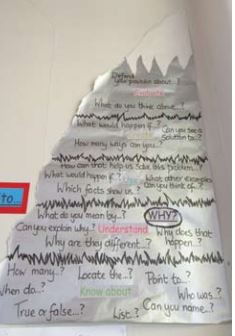Questioning plays a fundamental role in the learning environment. I know as a Year 3 class teacher that I ask my pupils many questions each day, and am asked numerous questions in return. Whilst a fair proportion may be off topic, the majority of questions occur during lessons and regard the content of that which is being learnt. As such, questioning must make up a significant part of my strategy for teaching and
learning, so am I using questioning in the most effective manner?
The use of questioning within the classroom has been the focus of many studies in the past, including that by Alexander1. Question types may be broadly defined as either ‘open’ or ‘closed’ (See box 1) and by the level of cognitive challenge required to formulate and deliver a response. It follows that to stretch pupils in their learning, questions should be rich and open, stimulating a high level of cognitive challenge in respondents. However, from his research, Alexander concluded that the vast majority of questions asked by teachers required a low cognitive level response and were designed simply to funnel pupils towards a predetermined answer. Furthermore, Alexander found only 10 per cent of questions asked by the teachers were of open type, requiring a more thought out reply, and 15 per cent of the teachers observed did not ask any open questions at all. Such findings may likely be extrapolated to classrooms across the country, the research suggests questioning within the learning environment could be made more effective - so what resources
could help to achieve this?
Box 1
Classification of question types:
Closed – require only a short response, often ‘yes’ or ‘no’. Closed questions check knowledge but do little to divulge the comprehension of such knowledge and don’t stimulate a questioning dialogue.
Open – encourage the respondent to deliver more lengthily replies which stimulate a questioning dialogue. Open questions may explore respondent’s level of comprehension and reveal misconceptions they may hold.
